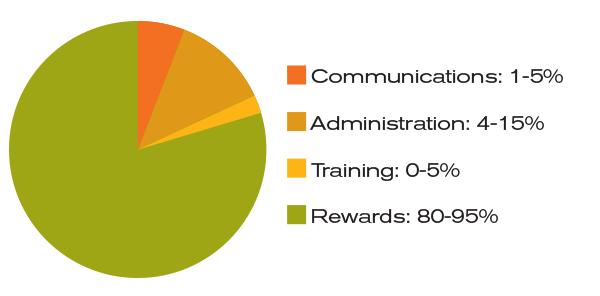5 ideas to get the best performance from your sales team
Written by: Emily Sadnick, Account Director Client Services, Sales and Channel
(View Author Bio)
As sales leaders, you are always looking for ways to get the best performance out of your teams. Sometimes that involves changing their mindset and behaviors. Understanding that 77% of our decisions are driven by emotion and not reason will help change behaviors and drive results. Here are five proven ideas to improve sales team performance.

- 1 -
Design your incentive programs based on the behavioral economics principle of Prospect Theory. If you give a person two equal choices – one telling them how much they will gain and the other telling them how much they will lose – they will choose the winning option, even though it’s the same. Focus on the positive (carrot), not the negative (stick).
- 2 -
Offer hedonic awards. People love emotional and pleasurable things more than they love cash rewards. Rewards such as travel, merchandise and experiences make people feel good about what they’ve accomplished and have higher efficacy.
- 3 -
Keep it simple. Running too many incentive programs at once can lead to Tyranny of Choice – people are overwhelmed and frustrated by too many choices.
- 4 -
Ensure a mix of program structures throughout the year. Many times, incentive programs are ideal for middle performers to help them set goals and stay focused. A mix of program structures will maximize engagement, minimize program overlap and move the middle.
- 5 -
Focus on your business objectives and/or performance issues. When you can define the objectives or issues you are looking to solve for, you’ll be able to design a program that will influence the desired behavior change from your team.
____________________
Now that you know about these five ways to change behaviors, you’ll need to budget for the incentive programs you will be creating. Incentive program payouts need to be budgeted at levels that are sufficient to grab participants’ attention and achieve your program objectives while also generating an acceptable ROI. Here are some guidelines to help.
-
3-5% of total sales revenue
-
5-10% of incremental sales revenue
-
15-20% of incremental profit
You’ll also need to consider that each program has additional elements beyond the actual rewards such as communications and training. Make sure to make a list of these elements to determine roughly how much of the overall budget should go to each element.

It’s also important to note that these percentages are approximate and will vary based on the programs being designed. Non-reward percentages may be significantly higher for programs with very small budgets and/or small audience sizes.
____________________
Getting the best performance from your teams doesn’t have to be a struggle. Use these behavioral economics principles to change mindsets, and you’re sure to reap the rewards.
____________________
The best way to get started is to get in touch.

















